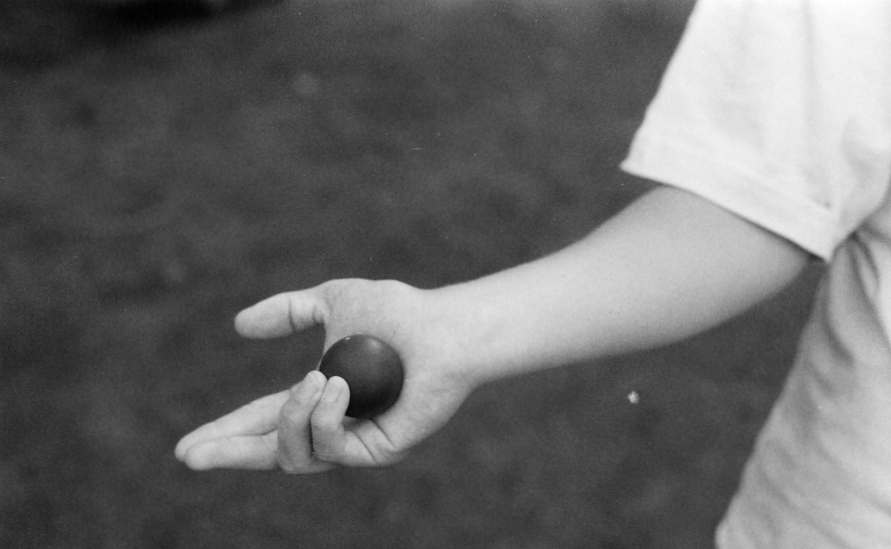
 Position: You can do this exercise sitting, standing, or lying down. You need a squash ball (or a similar sized soft compressible object). Balance it in the palm of your hand, on the inner (medial or ulnar) side, holding it lightly with the fourth and fifth fingers. Your elbow can be straight or bent.
Position: You can do this exercise sitting, standing, or lying down. You need a squash ball (or a similar sized soft compressible object). Balance it in the palm of your hand, on the inner (medial or ulnar) side, holding it lightly with the fourth and fifth fingers. Your elbow can be straight or bent.
Movement: With the palm of the hand facing upwards, squeeze the squash ball using only the 4th and 5th fingers, trying to keep the thumb, index and middle fingers as still and straight as possible. Hold for a count of 2, then relax completely.
Variations: Do some repetitions with the elbow straight, some with the elbow bent. You can turn the palm sideways and downwards. You can also do the exercise while doing arm movements, for instance lifting the arm up, moving the arm forwards and backwards, or in circles.
Repetitions and frequency: 2-3 times, as often as possible during the day.
Note: Avoid pain. Try to make sure that your middle finger does not join in the movement. Don’t press too hard. Don’t do too many repetitions in quick succession. If your hand feels tired or cramped from the exercise, you’re trying too hard, doing too much, or not relaxing enough in between repetitions.
After injury: The inner palm needs strengthening after any injury involving the inner side of the elbow (“golfer’s elbow”), the wrist or the hand. After “tennis elbow”, or injury to the common extensor tendon on the outer side of the elbow, the inner palm should be strengthened for balance. Very often, extensor tendon problems are caused by overuse of the extensor tendons, which can be the result of, or can lead to relative weakness in the flexor tendons. The imbalance can contribute to further strains in the hand or forearm, so it has to be corrected. This exercise is always needed following any injury involving the inner side of the hand or the wrist. It is useful for balance after injuries involving the thumb side of the hand or wrist.
MEDIAL HAND STRENGTHENER
Benefits: Strengthens the long finger flexor muscles which extend from the elbow to the fingers, as well as the small muscles on the inner side of the palm. The thumb side of the palm is generally stronger, and this exercise creates balance across the hand, which in turn produces a stronger and more efficient grip. It is essential for anyone involved in sports such as racket games and hockey.


